Nutrient Cycling: Difference between revisions
No edit summary |
m The LinkTitles extension automatically added links to existing pages (https://github.com/bovender/LinkTitles). |
||
| (16 intermediate revisions by 2 users not shown) | |||
| Line 1: | Line 1: | ||
[[File:nutrientsss.png|thumb|right|The Nutrient Cycle]]'''Nutrient cycling''' is the biogeochemical process of moving organic and inorganic through the environment. Nutrient cycles help soils and the life in soils receive their needed nutrients on a daily basis. Different types of nutrient | [[File:nutrientsss.png|thumb|right|The Nutrient Cycle]]'''Nutrient cycling''' is the biogeochemical process of moving organic and inorganic through the environment. Nutrient cycles help soils and the life in soils receive their needed nutrients on a daily basis. Different types of nutrient cycles are vital to maintain a sustainable life for an ecosystem. In simple terms, there are 3 different types of processes that take place within a typical terrestrial nutrient cycle; Litter, biomass, and soil. These three processes can be broken down into smaller scales and intertwine with each other. The size of each processes can depend on the environment. For example, a rainforest will have a big biomass and a small litter and soil. [[File:vernadsky.jpg|thumb|left|''The Biosphere'' by Vladamir Vernadsky]] Vladimir Vernadsky was a geochemist and mineralogist from the Soviet Union. He was awarded the Stalin Prize in 1943 for his popular hypothesis on the Biosphere with Eduward Suess’. Vernadsky was the scientist who coined the term biogeochemistry, which is the study of physical, geological, chemical, and biological processes that govern the natural environment. The term, nutrient cycling, is derived from Vernadsky's term, biogeochemistry. [7] | ||
| Line 7: | Line 7: | ||
Nutrient cycling transfers vital matter from one place to another. Some living things are unable to move to other places and nutrient cycling helps get nutrients to certain organisms. Elements can be stored in certain places within the environment and can be saved for later or can supply another organism. Nutrient cycles allow the flow and regulation of matter for organisms that need them or do not need them. It allows matter that is oversaturated in one system to move to another system where it can be useful. Nutrient cycling also makes organisms mutual because they work together to give and receive nutrients that are needed for them to sustain life. | Nutrient cycling transfers vital matter from one place to another. Some living things are unable to move to other places and nutrient cycling helps get nutrients to certain [[organisms]]. Elements can be stored in certain places within the environment and can be saved for later or can supply another organism. Nutrient cycles allow the flow and regulation of matter for organisms that need them or do not need them. It allows matter that is oversaturated in one system to move to another system where it can be useful. Nutrient cycling also makes organisms mutual because they work together to give and receive nutrients that are needed for them to sustain life. [7] | ||
| Line 17: | Line 17: | ||
'''Litter''' | '''Litter''' | ||
Litter is the process of naturally occurring matter falling into a system. For example, Trees shed their leaves in the fall and grow them back in the spring. These leaves can have useful nutrients that can transfer into the soil, giving soil some fertility. Those leaves reenter into a cycle where nutrients are passed into soil. Litter can also come from other places like precipitation. Precipitation enters into the litter system and can be passed into the soil or leave the cycle through surface runoff. Litter that stays in the nutrient cycle mostly comes from decomposition into soil | Litter is the process of naturally occurring matter falling into a system. For example, Trees shed their leaves in the fall and grow them back in the spring. These leaves can have useful nutrients that can transfer into the soil, giving soil some fertility. Those leaves reenter into a cycle where nutrients are passed into soil. Litter can also come from other places like precipitation. Precipitation enters into the litter system and can be passed into the soil or leave the cycle through surface runoff. Litter that stays in the nutrient cycle mostly comes from [[decomposition]] into soil [6] | ||
'''Soil''' | '''Soil''' | ||
Nutrients enter the soil through various ways. Soil is good at retaining nutrients and passing them to organisms that live in the soil. The small pores in the soil help retain the nutrients. Although soil can hold nutrients well there are still some ways where organic or inorganic matter can leave the cycle. One example is through leaching. Leaching is the process of a soluble mineral or chemical being lost from the soil as it travels into groundwater. Gravity and other factors play into leeching and take away nutrients from the soil. As that happens, certain bedrocks can emit good nutrients upward back into the soil. This uptake can benefit the soil and can enrich it. Nutrients within the soil can leave into biomass through plant uptake. | Nutrients enter the [[soil]] through various ways. [[Soil]] is good at retaining nutrients and passing them to organisms that live in the soil. The small pores in the soil help retain the nutrients. Although soil can hold nutrients well, there are still some ways where organic or inorganic matter can leave the cycle. One example is through leaching. Leaching is the process of a soluble mineral or chemical being lost from the soil as it travels into groundwater. Gravity and other factors play into leeching and take away nutrients from the soil. As that happens, certain bedrocks can emit good nutrients upward back into the [[soil]]. This uptake can benefit the soil and can enrich it. Nutrients within the soil can leave into biomass through plant uptake. [6] | ||
[[File:biomass-sources.jpg|thumb|right|Sources of Biomass]] | [[File:biomass-sources.jpg|thumb|right|Sources of Biomass]] | ||
'''Biomass''' | '''Biomass''' | ||
The biomass includes things like crops, animals, municipal waster, and agricultural residues. Nutrients enter the biomass through systems like precipitation and plant uptake. nutrients can be stored in the biomass through plants. | The biomass includes things like crops, [[animals]], municipal waster, and agricultural residues. Nutrients enter the biomass through systems like precipitation and plant uptake. nutrients can be stored in the biomass through plants. [6] | ||
| Line 36: | Line 36: | ||
'''Water Cycle''' | '''Water Cycle''' | ||
The water | The water cycle is highly complex and is anaccumilation of all hydrologic processes within the environment. The water cycle extends from groundwater flow to to condensation. Evaporation brings the water up to the atmosphere, precipitation returns the water to the soil and then can infiltrate or run off the soil, hitting the water table and returning to the ocean. It has a high influence over the nutrient cycle, as it plays a role in the movement of most nutrients. [1] | ||
The main component of the water cycle are: | The main component of the water cycle are: | ||
| Line 44: | Line 44: | ||
2. Water storage in oceans | 2. Water storage in oceans | ||
3. Sublimation - | 3. Sublimation - The process of snow and ice changing into water vapor without melting into water | ||
4. Evapotranspiration - | 4. Evapotranspiration - Water lost to the atmosphere from ground surface and the transpiration of groundwater by plants | ||
5. Water in the atmosphere | 5. Water in the atmosphere | ||
6. condensation - | 6. condensation - The process in which water vapor in the air is changed into liquid water | ||
7. Precipitation - | 7. Precipitation - Water released from clouds in the form of rain, sleet, snow, or hail. | ||
8. Water Storage in ice and snow | 8. Water Storage in ice and snow | ||
'''Nitrogen Cycle''' [[File:nitrogen_cycle.png|thumb|right|The Nitrogen Cycle]] | '''Nitrogen Cycle''' [[File:nitrogen_cycle.png|thumb|right|The Nitrogen Cycle]] | ||
The nitrogen cycle moves nitrogen in and out of soil. It is important to the life and health of the soil as it carries amino acids and life itself. Nitrogen enters the soil through nitrogen fixation, the process of which nitrogen is converted into ammonia | |||
The [[nitrogen cycle]] moves nitrogen in and out of soil. It is important to the life and health of the soil as it carries amino acids and life itself. N2 gas makes up about 78% of the Earth's atmosphere.[4] Nitrogen enters the soil through nitrogen fixation, the process of which nitrogen is converted into ammonia. Prokaryotes are organisms that can convert atmospheric nitrogen. These organisms convert nitrogen into ammonia which can be taken up by plants. Plants can use ammonia to make organic molecules. Nitrogen molecules can be passed to animals when plants are eaten. [3] | |||
'''The Carbon Cycle''' | '''The Carbon Cycle''' | ||
Much like the nitrogen cycle, the carbon cycle sustains all life. Carbon is the basis for soil fertility as it | Much like the nitrogen cycle, the carbon cycle sustains all life. Carbon is the basis for soil fertility as it releases nutrients for plant growth and acts like riparian zone towards harmful substances. Carbon moves through the environment similarly to the water cycle and the nitrogen cycle. There are two subcycles within the carbon cycle; the exchange among living organisms and the cycle of carbon in geological processes. Carbon moves freely through the air as carbon dioxide. Carbon dioxide can dissolve in water to produce bicarbonate. Land plants, bacteria, and [[algae]] take in carbon dioxide or bicarbonate and can convert them into organic molecules. The organic molecules then pass through [[food chains]] until it is once again release as a gas.[2] | ||
'''The Oxygen Cycle''' | |||
The oxygen cycle is the circulation of oxygen throughout nature. Oxygen is the second most abundant element in the atmosphere, next to nitrogen. Animals and plants use oxygen to breathe and return it into the air. Oxygen can pair up with carbon to form carbon dioxide and will then be taken up by algae and terrestrial plants. ocygen is freed through the process of photolysis. high energy sunlight will break apart oxygen bearing molecules to produce oxygen. | |||
'''The Sulfur Cycle''' | |||
Sulfur is an plays an important role on earth. Sulfur can enter soil through decomposition of living things, waster products, and deposition of sulfides in sediments. sulfates can be used by microbial organisms and plants. sulfur contains nutrients vital for plant growth. It gives plants proten and [[Plant Hormones|plant hormones]] to grow. | |||
==References== | ==References== | ||
1. The water cycle. (n.d.). Retrieved from https://www.khanacademy.org/science/biology/ecology/biogeochemical-cycles/a/the-water-cycle | |||
--- | 2. The carbon cycle. (n.d.). Retrieved from https://www.khanacademy.org/science/biology/ecology/biogeochemical-cycles/a/the-carbon-cycle | ||
“The Nitrogen Cycle.” GeographyBase.com, Geography Bse, 16 Nov. 2017, geographybase.com/the-nitrogen-cycle. | 3. “The Nitrogen Cycle.” GeographyBase.com, Geography Bse, 16 Nov. 2017, geographybase.com/the-nitrogen-cycle. | ||
“Nitrogen Cycle The Complete Process of Biogeochemical Cycle.” Biology, 18 Jan. 2018, | 4. “Nitrogen Cycle The Complete Process of Biogeochemical Cycle.” Biology, 18 Jan. 2018, | ||
"The importance of Nitrogen" byjus.com/biology/nitrogen-cycle/.https://organicnz.org.nz/magazine-articles/role-importance-nitrogen-soil/ | 5. "The importance of Nitrogen" byjus.com/biology/nitrogen-cycle/.https://organicnz.org.nz/magazine-articles/role-importance-nitrogen-soil/ | ||
Bailey, Regina. ThoughtCo, www.thoughtco.com/all-about-the-nutrient-cycle-373411. | 6. Bailey, Regina. ThoughtCo, www.thoughtco.com/all-about-the-nutrient-cycle-373411. | ||
Nutrient Cycling, sci.waikato.ac.nz/farm/content/nutrientcycling.html. | 7. Nutrient Cycling, sci.waikato.ac.nz/farm/content/nutrientcycling.html. | ||
Latest revision as of 13:45, 1 May 2025
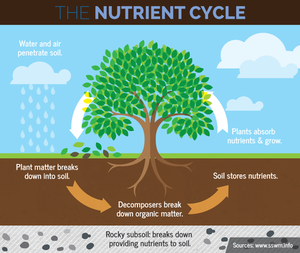
Nutrient cycling is the biogeochemical process of moving organic and inorganic through the environment. Nutrient cycles help soils and the life in soils receive their needed nutrients on a daily basis. Different types of nutrient cycles are vital to maintain a sustainable life for an ecosystem. In simple terms, there are 3 different types of processes that take place within a typical terrestrial nutrient cycle; Litter, biomass, and soil. These three processes can be broken down into smaller scales and intertwine with each other. The size of each processes can depend on the environment. For example, a rainforest will have a big biomass and a small litter and soil.
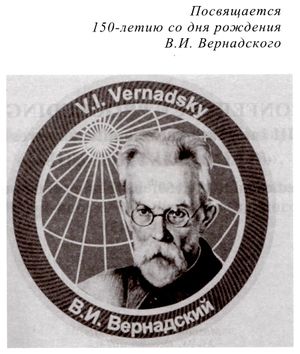
Vladimir Vernadsky was a geochemist and mineralogist from the Soviet Union. He was awarded the Stalin Prize in 1943 for his popular hypothesis on the Biosphere with Eduward Suess’. Vernadsky was the scientist who coined the term biogeochemistry, which is the study of physical, geological, chemical, and biological processes that govern the natural environment. The term, nutrient cycling, is derived from Vernadsky's term, biogeochemistry. [7]
Importance
Nutrient cycling transfers vital matter from one place to another. Some living things are unable to move to other places and nutrient cycling helps get nutrients to certain organisms. Elements can be stored in certain places within the environment and can be saved for later or can supply another organism. Nutrient cycles allow the flow and regulation of matter for organisms that need them or do not need them. It allows matter that is oversaturated in one system to move to another system where it can be useful. Nutrient cycling also makes organisms mutual because they work together to give and receive nutrients that are needed for them to sustain life. [7]
Processes
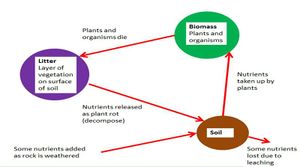
Litter
Litter is the process of naturally occurring matter falling into a system. For example, Trees shed their leaves in the fall and grow them back in the spring. These leaves can have useful nutrients that can transfer into the soil, giving soil some fertility. Those leaves reenter into a cycle where nutrients are passed into soil. Litter can also come from other places like precipitation. Precipitation enters into the litter system and can be passed into the soil or leave the cycle through surface runoff. Litter that stays in the nutrient cycle mostly comes from decomposition into soil [6]
Soil
Nutrients enter the soil through various ways. Soil is good at retaining nutrients and passing them to organisms that live in the soil. The small pores in the soil help retain the nutrients. Although soil can hold nutrients well, there are still some ways where organic or inorganic matter can leave the cycle. One example is through leaching. Leaching is the process of a soluble mineral or chemical being lost from the soil as it travels into groundwater. Gravity and other factors play into leeching and take away nutrients from the soil. As that happens, certain bedrocks can emit good nutrients upward back into the soil. This uptake can benefit the soil and can enrich it. Nutrients within the soil can leave into biomass through plant uptake. [6]
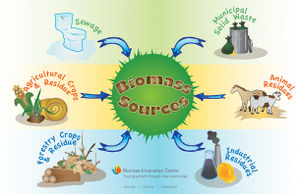
Biomass
The biomass includes things like crops, animals, municipal waster, and agricultural residues. Nutrients enter the biomass through systems like precipitation and plant uptake. nutrients can be stored in the biomass through plants. [6]
Cycles Associated With The Nutrient Cycle
Water Cycle
The water cycle is highly complex and is anaccumilation of all hydrologic processes within the environment. The water cycle extends from groundwater flow to to condensation. Evaporation brings the water up to the atmosphere, precipitation returns the water to the soil and then can infiltrate or run off the soil, hitting the water table and returning to the ocean. It has a high influence over the nutrient cycle, as it plays a role in the movement of most nutrients. [1]
The main component of the water cycle are:
1. Evaporation
2. Water storage in oceans
3. Sublimation - The process of snow and ice changing into water vapor without melting into water
4. Evapotranspiration - Water lost to the atmosphere from ground surface and the transpiration of groundwater by plants
5. Water in the atmosphere
6. condensation - The process in which water vapor in the air is changed into liquid water
7. Precipitation - Water released from clouds in the form of rain, sleet, snow, or hail.
8. Water Storage in ice and snow
Nitrogen Cycle
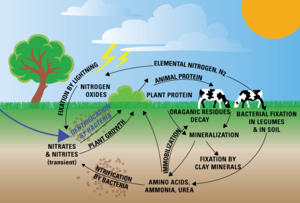
The nitrogen cycle moves nitrogen in and out of soil. It is important to the life and health of the soil as it carries amino acids and life itself. N2 gas makes up about 78% of the Earth's atmosphere.[4] Nitrogen enters the soil through nitrogen fixation, the process of which nitrogen is converted into ammonia. Prokaryotes are organisms that can convert atmospheric nitrogen. These organisms convert nitrogen into ammonia which can be taken up by plants. Plants can use ammonia to make organic molecules. Nitrogen molecules can be passed to animals when plants are eaten. [3]
The Carbon Cycle
Much like the nitrogen cycle, the carbon cycle sustains all life. Carbon is the basis for soil fertility as it releases nutrients for plant growth and acts like riparian zone towards harmful substances. Carbon moves through the environment similarly to the water cycle and the nitrogen cycle. There are two subcycles within the carbon cycle; the exchange among living organisms and the cycle of carbon in geological processes. Carbon moves freely through the air as carbon dioxide. Carbon dioxide can dissolve in water to produce bicarbonate. Land plants, bacteria, and algae take in carbon dioxide or bicarbonate and can convert them into organic molecules. The organic molecules then pass through food chains until it is once again release as a gas.[2]
The Oxygen Cycle
The oxygen cycle is the circulation of oxygen throughout nature. Oxygen is the second most abundant element in the atmosphere, next to nitrogen. Animals and plants use oxygen to breathe and return it into the air. Oxygen can pair up with carbon to form carbon dioxide and will then be taken up by algae and terrestrial plants. ocygen is freed through the process of photolysis. high energy sunlight will break apart oxygen bearing molecules to produce oxygen.
The Sulfur Cycle
Sulfur is an plays an important role on earth. Sulfur can enter soil through decomposition of living things, waster products, and deposition of sulfides in sediments. sulfates can be used by microbial organisms and plants. sulfur contains nutrients vital for plant growth. It gives plants proten and plant hormones to grow.
References
1. The water cycle. (n.d.). Retrieved from https://www.khanacademy.org/science/biology/ecology/biogeochemical-cycles/a/the-water-cycle
2. The carbon cycle. (n.d.). Retrieved from https://www.khanacademy.org/science/biology/ecology/biogeochemical-cycles/a/the-carbon-cycle
3. “The Nitrogen Cycle.” GeographyBase.com, Geography Bse, 16 Nov. 2017, geographybase.com/the-nitrogen-cycle.
4. “Nitrogen Cycle The Complete Process of Biogeochemical Cycle.” Biology, 18 Jan. 2018,
5. "The importance of Nitrogen" byjus.com/biology/nitrogen-cycle/.https://organicnz.org.nz/magazine-articles/role-importance-nitrogen-soil/
6. Bailey, Regina. ThoughtCo, www.thoughtco.com/all-about-the-nutrient-cycle-373411.
7. Nutrient Cycling, sci.waikato.ac.nz/farm/content/nutrientcycling.html.